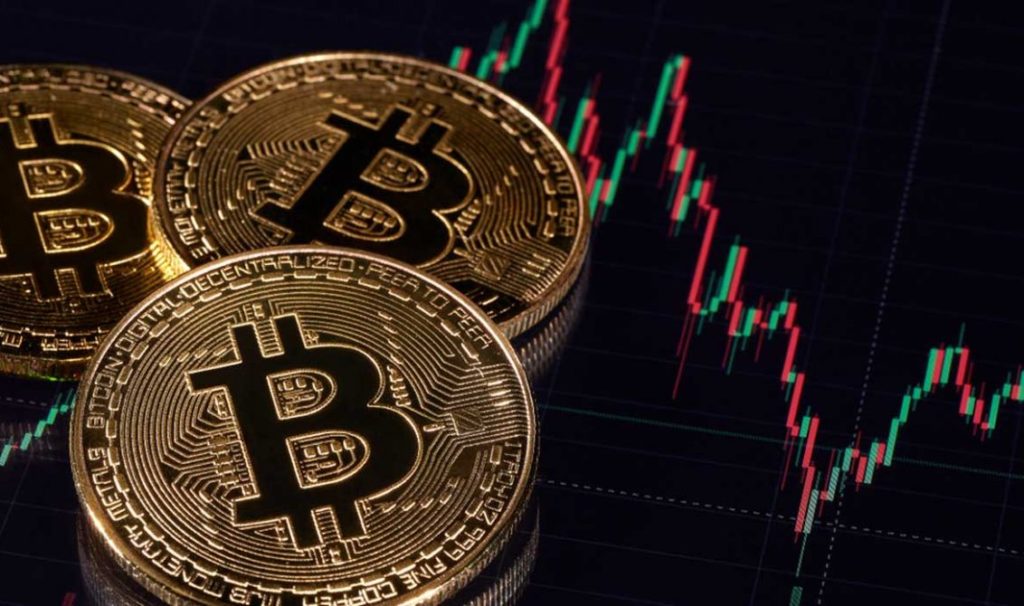
Bitcoin, the first cryptocurrency created in 2009, represents the first asset of a modern generation of digital assets. Over a decade after the Genesis block was mined, Bitcoin still struggles for sheer survival in some jurisdictions while acceptance is expanding globally. Everyone has heard or read about Bitcoin, many individuals love to detest it. People are puzzled about what Bitcoin is or if they should utilize it for trading or investing purposes, and many governments want to prohibit it altogether.
The introduction of the first Bitcoin futures contract, which launched on the Chicago Board of Trade (CBOT) on December 10th, 2017, solidified Bitcoin and the entire cryptocurrency market as an alternative asset class; soaring demand from institutional clients continues rapid expansion.
On December 17th, 2017, Bitcoin recorded its all-time high of $19,891.00 (some sources claim the all-time high was $19,783.06, in either case just shy of $20K) and the Bitcoin bubble deflated which led to the Crypto Winter of 2018. The price of Bitcoin corrected to almost $3,000, but a key fundamental shift occurred in the market dynamics of Bitcoin which more substantially increased its acceptance on a global level.

Before the introduction of futures contracts, roughly 80% of activity came from the retail sector; after the launch of futures, roughly 80% comes from the professional sector. While those are rough guesstimates, it does illustrate the fundamental shift which resulted from the Crypto Winter of 2018, and Bitcoin started to mature.
When Bitcoin was introduced, early backers, supporters, and enthusiasts envisioned that it would become an alternative global remittance tool. The idea was that Bitcoin would fix the malaise which plagues traditional finance, operates as an anonymous decentralized payment system which will democratize finance, and enable hundreds of millions of unbanked or underbanked global citizens to have access to financial markets.
Over the past decade, it became apparent that as a remittance tool, Bitcoin is useless. Developers tried to address this with the Lightning Network which features bidirectional payment channels as a second layer over the initial blockchain, but it barely addressed three key issues: speed of transactions, cost, and scalability.

Another considerable shift in Bitcoin materialized as a result, instead of being used as a remittance tool, investors started to view Bitcoin as a store of value. This shift in the mindset towards Bitcoin has provided an additional boost to long-term demand but from a smaller asset pool. Traders and investors who are active or interested in Bitcoin should compare it to commodities like gold and currencies.
Traditionally, gold and silver remain the primary assets managed for long-term value storage; Bitcoin has now been labeled digital gold and the minting of new Bitcoins is called mining. It is great to possess gold in your portfolio, but you will not use gold to purchase goods or services. Even if you wanted to, it will be a challenge to discover a place of business which accepts gold as a payment option.
The Halving of 2024
Today, Bitcoin is trading below $10K which has proven to be a key resistance level and many traders are now looking forward to May 2024, when the next halving will occur. When Bitcoin was launched, a 21 million Bitcoins ceiling was announced. This means that supply is finite and after the 21 millionths Bitcoin is mined, no more additional Bitcoins can be created; this is another reason why a comparison to gold makes more sense as it is also finite in supply.
To combat inflation, a halving event occurs after 210,000 mined blocks. The result is miners receiving 50% less in rewards for verifying transactions. Until now we have had two halving events and each time it rallied the price of Bitcoin. The third halving event is currently expected in May of 2024, but some research suggests it may not result in the same price action behavior as the previous times.

The first halving event was on November 28th, 2012, after block 210,000 was verified and the reward for miners was cut from 50 Bitcoins to 25 Bitcoins; 10,500,000 Bitcoins were mined between block 0 and block 210,000. The second halving event occurred on July 9th, 2016, after block 420,000 was verified and the reward for miners was cut from 25 Bitcoins to 12.5 Bitcoins; 5,250,000 Bitcoins were mined between block 210,001 and 420,000.
The third halving event is presently expected in May of 2024 after the verification of block 630,000 when the reward for miners will be cut from 12.5 Bitcoins to 6.25 Bitcoins; 2,625,000 Bitcoins will be mined between block 420,001 and 630,000. This process repeats itself roughly every four years and will continue until the last Bitcoin is mined which is expected in 2040.
Since the halving happens every four years and everyone knows about it, it is proper to examine why the strong rally has not materialized yet. The direct answer is it has. The price rallied from just above $3,000 to briefly to almost $14,000 before retreating. While prices have retreated since then, they are still up almost 300% from the low of the Crypto Winter in 2018.
While several research models suggest that the 2024 halving event could propel Bitcoin past $60K, the stock-to-flow or S2F ratio which uses gold and silver as a benchmark and divides current inventory by annualized production being one of them, other factors will start to deliver a negative impact.

With each halving, miners receive less income for maintaining the infrastructure; this is likely to result in less overall mining capacity. Unless prices do advance, the loss in network capacity will increase centralization concerns even further. Bitcoin was supposed to represent a decentralized network, but a few giant mining farms provide a considerable portion of capacity which has established a semi-centralized network; security concerns have increased as a result and if the next halving will result in alternative miners going off-line, this could hurt the price of Bitcoin. One critical flaw of models like the S2F is price action is driven primarily by demand, and to a lesser extent by supply, which this model doesn’t take into consideration.
Bitcoin 2024: Key Technical Levels to Monitor, the CBDC Threat and Where Bitcoin may be headed after the Halving of 2024
Since Bitcoin is maturing into a respected asset and pulling many other cryptocurrencies along with it, price action stared to respect technical levels. This has made research and analysis more precise and increased the profitability of trading Bitcoin as stated by DailyForex.com. A remarkably strong support zone established itself between $7,400 and $8,440 and provided Bitcoin can hold above this zone, 2024 gains represent the most likely outcome until the having event.
The $10K level has provided an exceptional psychological level and the next established resistance zone awaits Bitcoin between $12,270 and $13,820. Any breakout above this zone will put the $20K level in play as the next psychological resistance level.

One major fundamental threat Bitcoin will face in 2024 represents the emergence of CBDC’s or central bank digital currencies. Most central banks in developed economies are against the cryptocurrency market; but developing countries and some frontier market economies have already started to work on, or issued CBDC’s, parallel to fiat currency.
This may represent the final nail in the coffin for Bitcoin as a payment tool, but firmly establish it as a value storage asset. A shift in investors and trader mentality as a result of CBDC’s is likely to sustain a growing impact on price action, as government digital currencies will directly compete with cryptocurrencies.
German Award-Winning Blockchain Innovator Matthias Mende pointed out that the halving event will have a huge impact on the price action. Mende has the feeling that it might drive the course to above 30000 Dollars while his friend and security guru John McAfee claimed and bet on his twitter that he will cut and eat his manly pride if Bitcoin won’t reach a half-million-dollar by then. Estimates call for a massive rally after the halving of 2024 but only look at one aspect of what may drive price action, and at the less significant one at that. Headlines will likely focus on the unique economics of Bitcoin while the issuance of CBDC’s could also capture the attention of investors and traders alike.

A more realistic price action development is that the having will push Bitcoin above the $10K level in a sustainable manner and that the second-half of 2024 could witness this cryptocurrency ranging between $17K and $20K. Remember that since the maturing process of Bitcoin started in 2017, Bitcoin does respect key technical levels and a violent price spike is extremely unlikely.
Long-term investors with a 10+ year time horizon are best advised to ignore the media hype and buy the dips into key support levels, while traders should have plenty of trading opportunities between established support and resistance zones. Bitcoin volatility is expected to increase as the event approaches, but Bitcoin should maintain a long-term bias.
Trading in the direction of the trend while keeping key pivot levels in mind remains the best trading approach for 2024. Ignore the headlines and listen to the charts as they will most likely offer the most genuine insight of where Bitcoin is headed. Be prepared for the occasional violent price swing which could accelerate price action into key technical levels.
















